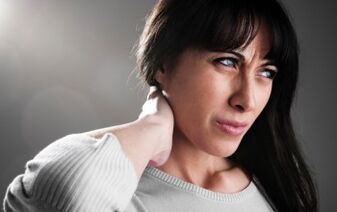
A sedentary lifestyle, office work, lack of physical activity and the characteristics of a modern diet lead to the spread of many diseases that are characteristic of our urban society.
Cervical osteochondrosis is rightly the leader among them.
And all because of the weak muscular corset and these 7 discs have more mobility than any other part of the spine, they receive constant physical activity in the form of the need to keep the head in any position, bend and turn.
Causes of the disease
In the past, osteochondrosis was considered a disease of adolescence, and people living for more than 40 years suffered from it. However, every year the age of the disease decreases, and it "rejuvenates", which makes young people aged 18-20 prone to the disease.
The main reasons for the appearance of such pathologies:
Postural disorders during adolescence.Young people now do not want to control their posture, which leads to its violation.
Overweight.The appearance of excess weight increases the load on the spine.
The curvature of the back.The risk of osteochondrosis increases with back curvature.
Back injury.Back injury causes irreparable damage to any part of the spine.
Metabolic disease.In the case of metabolic disorders, the likelihood of developing osteochondrosis is also high.
Heavy physical labor.Very heavy physical work leaves indelible marks on the health of the spine in general and the cervical region in particular.
Low level of physical fitness.The level of physical fitness also affects the condition of the spine, and the lower it is, the weaker the spine.
Mistakes when performing complex exercises.Athletes may experience problems with osteochondrosis during training with gross errors at work.
Stress.In modern man, nervous tension and constant stress also cause disorders in the cervical spine.
Sedentary lifestyle.A sedentary lifestyle or inactivity greatly affects the vertebrae.
Past diseases.Osteochondrosis can develop after infections and hypothermia.
The disease is, in fact, the result of muscle spasms that prevent the neck vertebrae from moving easily, impairing the blood supply to the tissues, impaired posture, resulting in dystrophic processes in the vertebrae themselves. it also begins to activate the intervertebral discs, causing narrowing of the intervertebral foramina and constriction of the nerve roots.
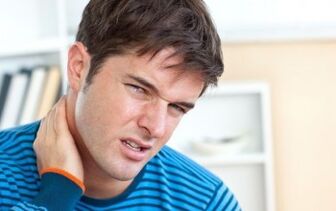
The main symptoms
The symptoms of cervical osteochondrosis are slightly different from other parts of the spine.
Tight adaptation of the vertebrae leads to the conclusion that even the slightest change in one of them compresses or dislocates any nerve or vessel, as well as compresses the spinal cord.
That is why there may be disturbances in the body: impaired skin sensitivity, dizziness.
Clinical manifestations:
- Pain in the neck and shoulders that extends to the back of the head, ears and eyes, and does not pass even at night.
- Increased pain in the upper extremities during tension.
- Decreased sensitivity of the upper extremities, muscle weakness, difficulty moving.
- In the morning, the neck muscles tense and the head tightens, it seems, the neck is "rested".
- Dizziness or bending of the head, pain in the neck.
- From time to time the joints become numb, there is a feeling of burning or tingling.
- Occasionally there is a throbbing pain in the neck and chest.
- Violent head movements can cause blurred vision, dizziness, or fainting.
- Occurrence of tinnitus.
- Decreased visual acuity and hearing.
- There is a mismatch in language.
- There are heart pains that do not respond to trinitroglycerin, but vary in intensity due to changes in body position.
- Headaches occur in the occiput, crown and temples.
- The so-called "paleness" occurs in the region of the cervical region, ie the connective tissue grows.
Symptoms of cervical osteochondrosis
Cervical (neck pain and muscle tension)
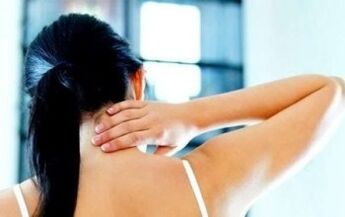
Cervical pain is a pain syndrome characterized by pain and tension in the neck muscles, loss of mobility in the neck, dizziness, blurred vision, and vegetative dysfunction.
The pain may be tingling, throbbing, and may also be "throwing. "
It is worth making the slightest movement, sneezing or coughing - as muscle tension is given by pain.
When the patient has to do this with his whole body, there are also problems with dizziness or sideways bending.
In addition, patients experience dizziness, occipital pain, tinnitus, numbness in the back of the head, and numbness of the hands.
The reasons for its formation may be:
- Hypothermia.
- Restless position of the head during sleep.
- Sedentary work that forces you to keep your head restless for a long time.
- Physical activity that causes muscle tension in the neck area, including exercise in the gym.
- Injuries of the cervical spine.
- Tissue infections or tumors.
Pain in the back of the head, shoulders and arms, as well as pain when turning the head, indicate the presence of the initial stage of a chronic disease such as osteochondrosis.
Cervicocranial or posterior cervical symptom (pain in the cervico-occipital region)
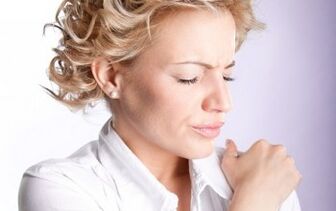
Cervicocranial pain is pain in the cervical-occipital region, the occurrence of which is closely associated with damage to the cervical spine, degenerative lesion or its inflammation.
Its distribution often reaches the frontotemporal lobe, shoulder and arm, and can be unilateral. In this case, the parties do not change.
The intensity of this pain is moderate, its intensity is observed with head movements, palpation of the neck-occipital muscles, as well as prolonged stay in a position that is uncomfortable for the head.
Usually, the cause of these pains can be either osteoarthritis or osteochondrosis of the cervical spine.
In these cases, the pain may be compressive, throbbing, or throbbing. Light movements of the head, cough, muscle tension can cause exacerbation of pain.
The main complaints of patients are:
- It is impossible to turn and bend the head, it is necessary to move the whole body.
- Convergence of the occipital region and hands.
- Noise in the ears.
- Dizziness.
- Pain in the occipital region, etc.
Cervicobrachialgia or shoulder-shoulder syndrome (brachiaglia)
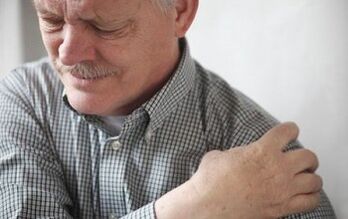
Cervicobrachialgia is characterized by numbness of the hands, deep fractures, and often stabbing pain in the hands or forearms, as well as a feeling of weakness in the upper extremities.
This usually happens at night.
The disease can develop reflexively, in most cases involving heavy physical labor, and 9 out of 10 people are women.
In this case, vegetative-vascular, muscle-tonic and neurodystrophic manifestations can be observed.
A very characteristic feature of reflex syndromes is the presence of muscle-tonic reactions such as muscle spasms.
Treatment
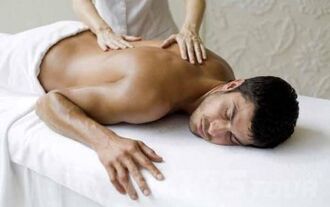
Treatment should be comprehensive.
At the same time, it is necessary to apply the principles of both drug and non-drug treatment, keeping in mind the prevention of possible diseases.
Drug treatment involves the use of drugs that relieve pain and inflammation, as well as drugs that improve cerebral circulation.
If there is a pathology in the form of muscle tension, then it is recommended to take sedatives and vitamin-mineral complexes in therapeutic doses.
An important role in treatment is given to physiotherapy methods:
- water procedures.
- Paraffin applications.
- Electrophoresis.
- Magnetotherapy.
Widespread use of alternative therapies also helps to combat this disease. However, therapeutic exercise remains the most effective treatment.
Prevention
In order for all the problems associated with osteochondrosis to pass you by, you need to remember all the causes that contribute to the appearance of the disease.
Since the main reason is a sedentary lifestyle, do not forget about morning exercises and walks, and definitely include exercises with neck muscles in your daily gymnastics. And keep in mind that circular movements of the head can cause neck injuries, so you should not include them in your workouts.
Also keep in mind that prophylactic examination of school-age children by an orthopedist is mandatory.
Form a strong muscular corset, be athletic.
Eat foods that can replenish the body with minerals such as calcium and magnesium and vitamins.



















